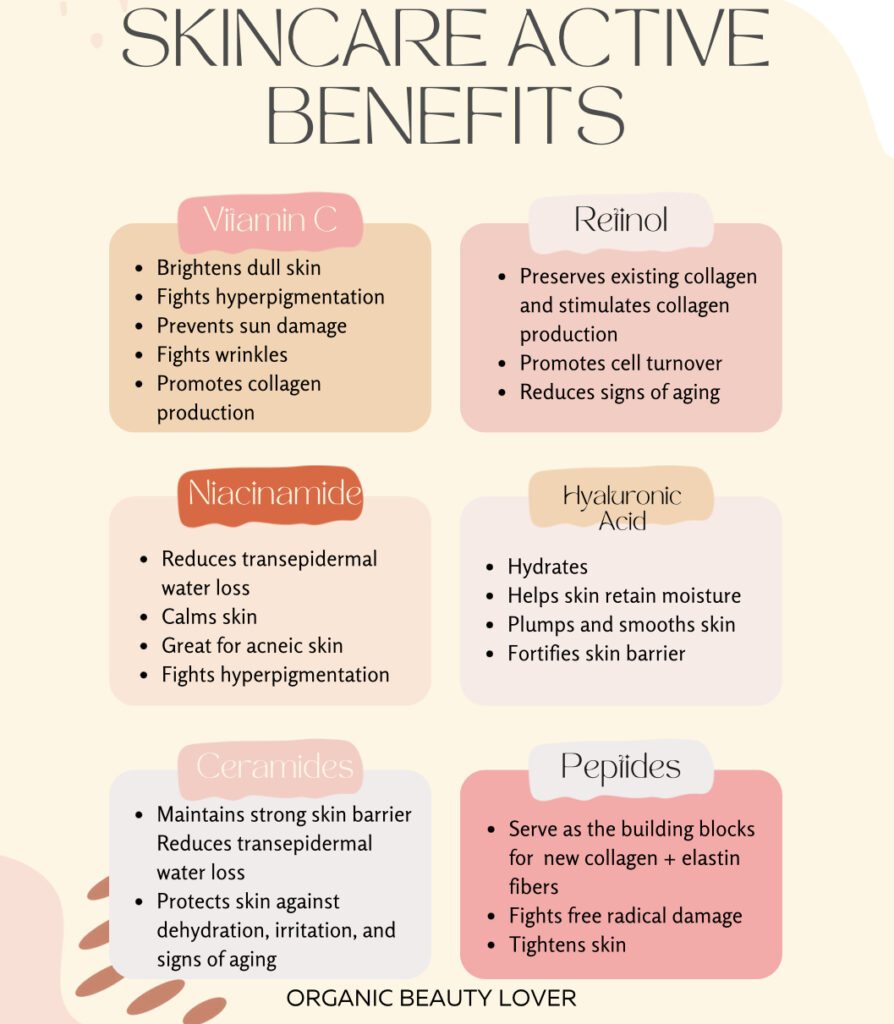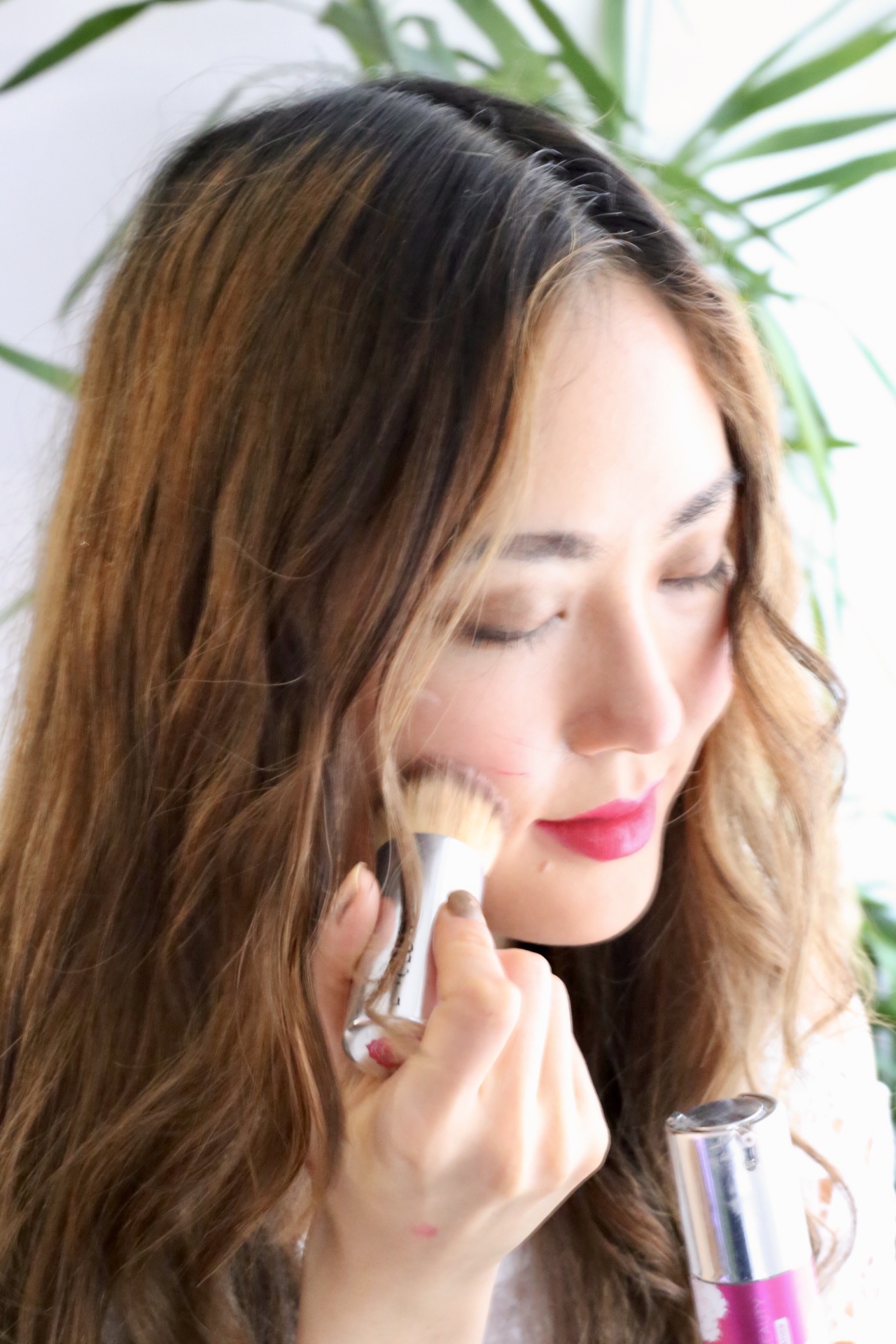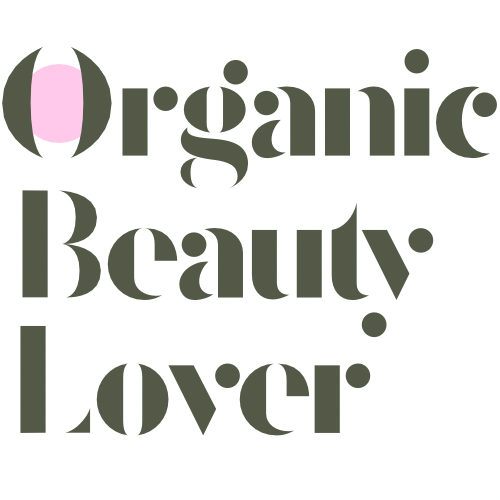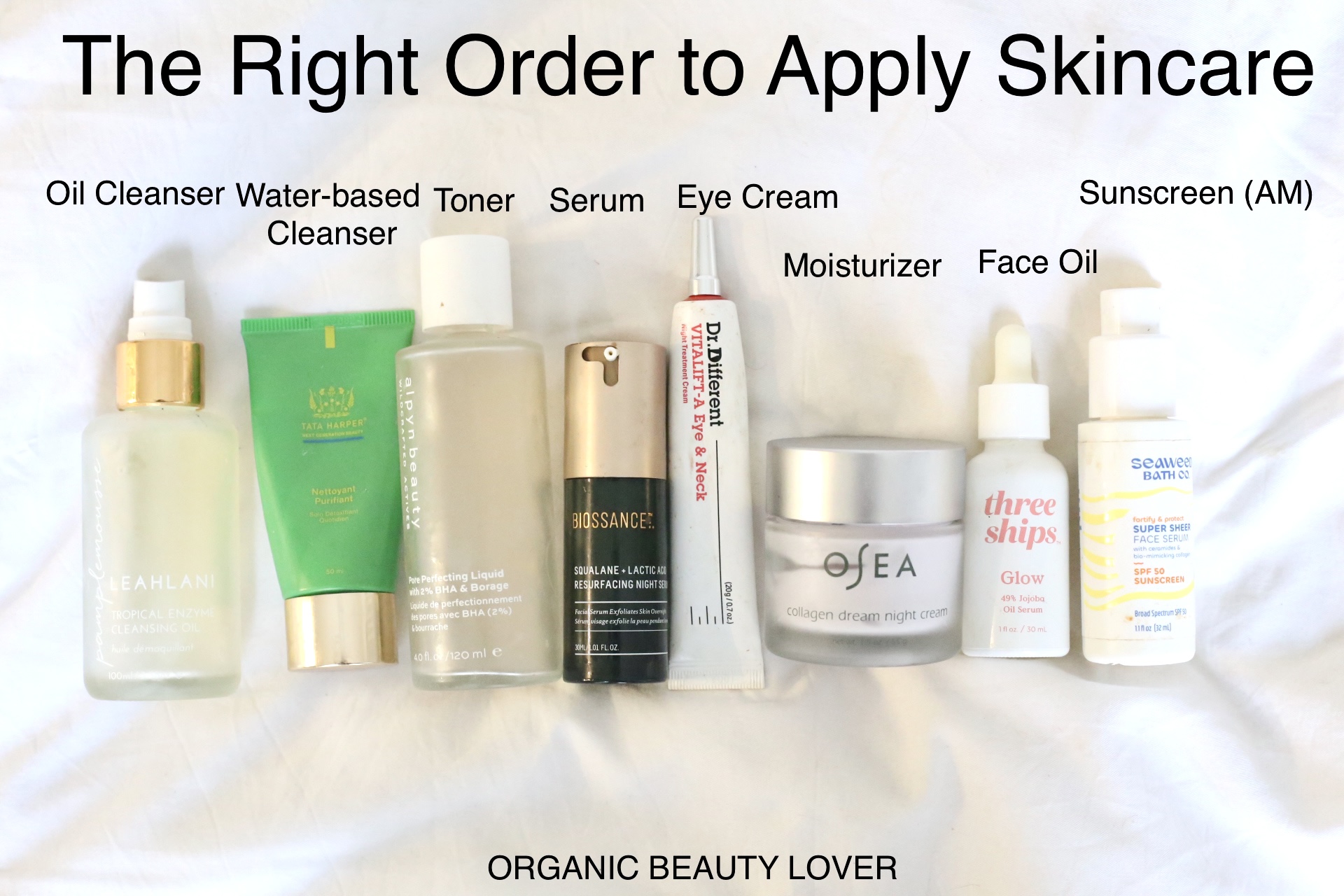In today’s article I’m teaching you the right order to apply skincare. You may be wondering does serum go after moisturizer or does moisturizer go after serum, and where does toner fit into all this. If you’re new to skincare, proper skincare application order might seem overwhelming at first. I promise you, knowing how to layer your skincare is easier than it sounds.
Here is the right order to apply skincare:
- 1st Cleanse (cleansing oil / cleansing balm)
- 2nd Cleanse (water-based cleanser)
- Toner
- Essence / Ampoule (optional K-beauty steps)
- Serum
- Eye Cream
- Moisturizer
- Face Oil
- Face Balm
During the day, always wear sunscreen before makeup!
Skincare Layering Tips
First, I always go by the rule of thumb of thinnest to thickest. This means applying products that are texturally the thinnest first and the thickest on top.
Second, if you’re interested in layering serums, the same rule of thumb (thinnest to thickest) applies. Start with the lightest serum first and apply the thicker serum on top. Make sure to wait until each serum is dry before applying the next to avoid pilling! That’s when product starts clumping up (very annoying).
The one exception I will add here is that I will apply the most advanced serum with the actives I want reaching my skin cells first regardless of consistency.
Third, I make sure to apply serums while my skin is still damp with toner, but I wait for my serums to dry before applying moisturizer.
Think of skin like a sponge. A sponge absorbs water much more easily when it’s already damp than when it’s dry. In the same way, skin absorbs serums better when it’s damp.
Step 1: Cleansing
I cannot stress how important thoroughly cleansing your skin is to healthy skin. You could be applying all the best, most expensive products on the market and they would be useless if applied to improperly cleansed skin.
Be very wary about going to bed with impurities still lingering in your pores. It’s not just about the fact that this wreaks havoc on your skin, but bedtime is when you really want to optimize improving skin health.
Always always always oil cleanse at night. Even if you have oily skin, using an oil cleanser can help control skin’s sebum production. Just opt for a lightweight one instead of a heavy product.
Oil cleansing involves using an oil-based cleanser first and a water-based cleanser second. Make sure to spend at least two full minutes cleansing.
In the morning, cleansing isn’t necessary for everyone and really depends on your skin. I personally do not cleanse unless I feel like I’m in need that particular day.
If you find that you wake up to grimy skin, then I do recommend cleansing. But if you have dry skin, you can skip this step entirely.
Step 2: Toner
I personally believe that toner is a must and should not be skipped. Tap water messes up the pH of your skin and applying toner not only helps balance your skin’s pH, it also removes any remaining residue after you’ve double cleansed AND preps your skin for the serums to come.
Toners are hydrators and hydrated skin will give you bouncy glowy skin, so the more hydration you add the better in my book . Toner serves 3 important functions:
- Balances your skin’s pH
- Removes any residue of makeup and impurities that can often be leftover even after you’ve double cleansed (use a clean cotton pad)
- Preps your skin to absorb serums
Step 3: Serum
While cleansing is the most important step of a nightly skincare routine, the most effective step will always be your serum. Yes, your serum is designed to work more effectively than your moisturizer! That’s why your best serum will ALWAYS beat your best moisturizer.
Serums are formulated differently from moisturizers and have molecules that are small enough to actually penetrate into the dermal layers.
The smaller the molecule the better it penetrates. (Moisturizers are formulated to act as a protective barrier and do not penetrate the way serums do). This is why people who are overly focused on moisturizing don’t find any changes happening to their skin.
I created this graphic showing some of the most common actives found in serums and their benefits.

Step 4: Eye Cream
Next are eye creams for the most delicate skin in our faves. I personally favor eye serums and eye oils/balms over eye creams. This is purely a personal preference.
I would look for eye products with ingredients well studied for their ability to target your specific concerns, whether it’s wrinkles, puffiness or dark circles.
If you find your cream isn’t working for your wrinkles, try switching to a richer product like an eye balm or eye oil serum.
Retinol: Do you apply before or after moisturizer?
A retinol will work more effectively when applied before moisturizer, but if you have dry or sensitive skin, it’s better to apply after moisturizer.
Retinol can be highly irritating for some people, so the order in which it’s applied depends on the individual.
Step 5: Moisturizer
The next step is moisturizer, which is going to seal everything you’ve just fed your skin and prevent moisture loss.
I love a thick, creamy moisturizer, but you should choose one according to your skin type. Oily and acne prone skin, for instance, should look into gel moisturizers or serum moisturizers.
A common mistake people make is expecting a moisturizer to fix all their problems or transform their skin when the main function of a moisturizer is to be an occlusive barrier so nothing gets in or out.
While moisturizers can provide many benefits, if you find that yours isn’t working for you, the skincare step you need to revisit is serums.
Remember that moisturizers LOCK IN moisture, so if there’s no moisture underneath, then there’s nothing for it to lock in.
Step 6: Face Oil / Face Balm
The last step of a skincare routine will be the most occlusive products – a face oil and/or face balm.
I love to luxuriate in this final step of my skincare routine and seal everything in. It’s also where plant actives can really shine as most face oils and face balms are made of 100% whole plants ingredients that are full of antioxidants.
Contrary to popular belief, oils can be beneficial even for oily skin. And some oils are so highly anti-bacterial that they’re effective spot (pimple) treatments.
Face balms are denser and have a balm or salve consistency thanks to a higher concentration of butters. But they do melt into an oil consistency once applied to skin.

Andrea is a clean beauty expert from Los Angeles, California with 10 years of experience in natural skincare and organic living. She writes for Organic Beauty Lover using her expertise to guide readers in choosing the best clean products. Andrea graduated from the University of Southern California in 2012 and has worked at multiple skincare companies, big and small. Connect with her @organicbeautylover.


Leave a Reply